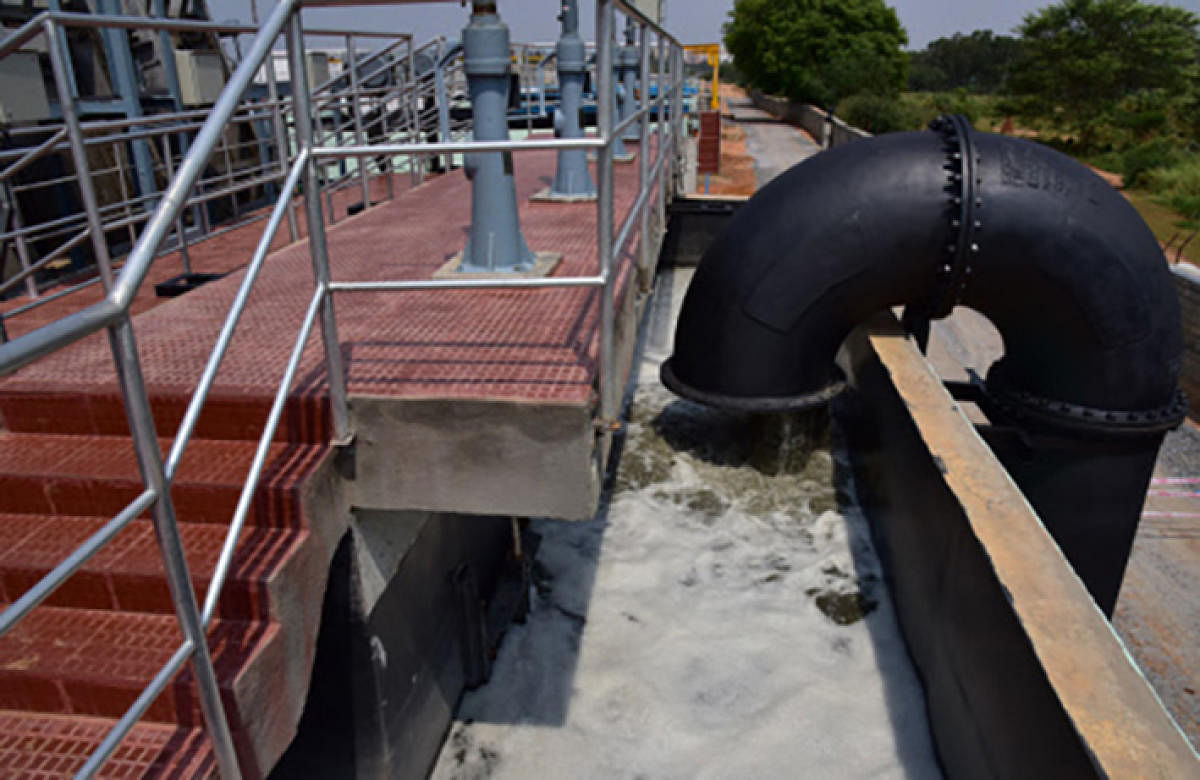

We are dying already. Even if the water from Bengaluru is contaminated, it will keep us alive for some more years. That’s well and good,” said H Srinivas, president of the Muduvadi Hosahalli Gram Panchayat in Kolar taluk.
Kolar and Chikkaballapur districts have not seen good monsoon in the last 14 years. Good rains in 2013 and 2016 were not spread across the districts. Searching for water, people across have sunk borewells up to 1600 feet and are invariably using water contaminated with fluoride. The treated sewage from Bengaluru is therefore seen as the light at the end of the tunnel.
So, the residents of Mallasandra in Kolar taluk held a protest on April 18 and announced that they will boycott the polls unless the government makes arrangements to fill their tank with the treated sewage. The KC Valley plan skips Mutturayaswamy Tank behind the village, situated 10 km ahead of Lakshmisagar Lake in Narasapura.
Decades of negligence
“After the Zilla Panchayat officials promised to fill the tank in three months, the voting started at 3 pm. We approached them several times before. I have already spent Rs 15 lakh on seven failed borewells. I will wait for the water to reach here before sinking the next one,” said Gopala Gowda.
Decades of official negligence and ignorance which have rendered Kolar and Chikkaballapur districts bone dry will have a similar effect on other districts as plans of water security involve big-ticket projects that end up further harming the environment.
Muduvadi and its big tank are part of the folklore with songs recounting how the overflowing water from Muduvadi quenches the thirst of other water bodies in the area.
“Today, the entire village is dependent on two borewells and one of them is set to go dry anytime. Last year, 15 people suffered a stroke and three of them died. The doctors said the water we are consuming is dangerous and will lead to major health problems,” said H Srinivas, president of the Gram Panchayat.
Srinivas was aware of the case in the Supreme Court but did not know about the row over heavy metals and chemicals. “At any cost, the government should not stop the water. Please write in your report that we are not worried even if the treated water is going to kill us in the next 10 years. We are already dying. However, if the government can purify it further, they should do it,” he said.
Over the last two decades, several reports have warned about the over-
exploitation of water in the region. By the time the reverse osmosis plants came to the villages seven years back, thousands of people have been affected by fluoride contamination. There has been no comprehensive survey to assess what fluorosis has done to the dry districts of Karnataka.
A senior Asha worker in the village said that under the National Programme for Prevention and Control of Fluorosis, several measures have been taken to help those in need but said there were several complications.
“Sometimes a patient has to travel to some other village to reach the health camp for an inspection. There are several complications. Since there is no monetary support involved, many patients do not even care to come for a check-up. There is hope that the water from Bengaluru will end this problem,” she said.
In Bellur, situated next to the Lakshmisagar lake, residents were happy with the greenish water in the waterbody. Several villagers in the gram panchayat office said they are finally getting enough water to irrigate their land.
“Last summer we hired two tankers to supply water to three villages. But thanks to water from Bengaluru, our borewells can now fill the overhead water tanks and reverse osmosis plant. We have been told that the KC Valley water gets better after it goes into the ground,” Panchayat Development Officer Samparaju said.
Manjunath N G, a farmer from Naganayakanahalli, said people in his village have capped the borewells and waiting for the treated sewage to recharge aquifers. “There are about 300 borewells, most of them sunk below 1500 feet. Our tanks are at the tail end of the clusters and hence will get the water late. We are eagerly waiting for the government to pump the water,” he said.
Kunteerappa Naik, 72, remembered that a 20’X20’ well was enough to irrigate his two acres of land about 15 years ago. “The well always had a good amount of water till my neighbour sunk two borewells. No rain has filled it since then. The government should control the number of borewells in a village,” he said.